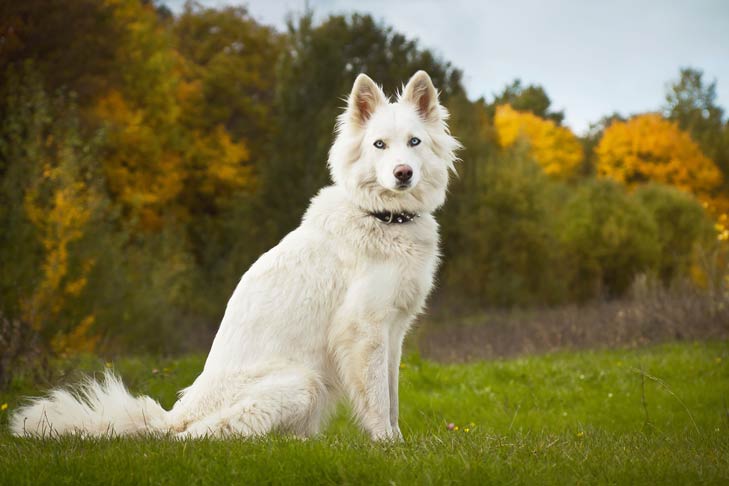Dogs and wild wolves share over 99 percent of their DNA. But thousands of years of selective breeding means domestic dogs suit being family companions. That doesn’t mean majestic wolves or hybrid wolfdogs, like White Fang in the famous Jack London novel, don’t continue to hold a fascination for many. And their allure has grown even more with the introduction of the dire wolves in Game of Thrones, one of the most popular TV shows of all time.
Fan attachment to Ghost, Nymeria, and their ill-fated littermates meant a surge in demand for controversial wolfdogs. Consequently, there’s been a sad spike in irresponsible, unscrupulous breeding and hard-to-care-for hybrids ending up in wolfdog sanctuaries.
And the Game of Thrones effect also saw more Huskies and other Northern breeds end up in shelters because of impulse buying. After all, these dogs are usually super smart and high-energy, with an independence of spirit and drive to work—not ideal candidates for traditional first-time dog owners and their lifestyles.
But, if you’ve done a ton of research, can offer bags of exercise and appropriate enrichment, and don’t mind your furnishings getting covered in shedding fur, you might be able to offer one of these wolf-like dog breeds a loving and fitting home.
Alaskan Klee Kai
Developed as a companion-sized version of the Alaskan Husky in the seventies, this Foundation Stock Service (FSS) breed comes in toy, miniature, and standard sizes. This little wolf look-alike might be compact, but Alaskan Klee Kai have big personalities. Inquisitive, intelligent, and energetic, they form strong bonds with their families but are often aloof and wary of strangers. Known for being more trainable than Huskies, you should still be ready for the wolf-like woo these spitz-type dogs emit when excited.
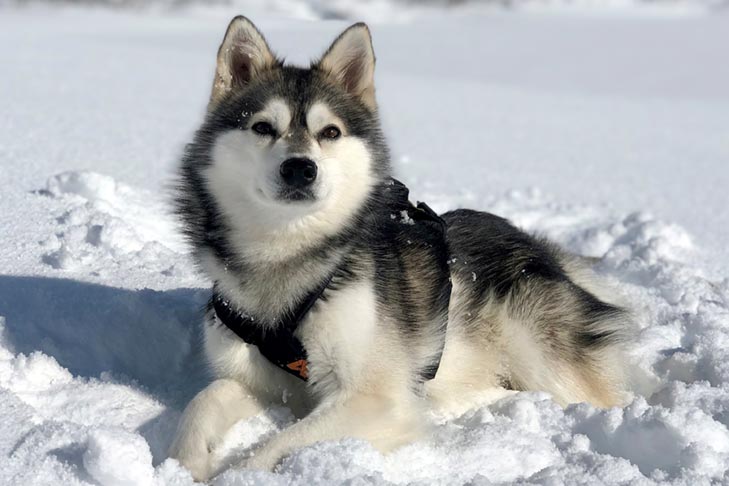
Alaskan Malamute
It’s no surprise this ancient basal breed reminds some people of their lupine forebears. Resembling their smaller Husky cousins, Alaskan Malamutes commonly have thick, gray-white, wolf-colored coats. Mals are dignified, devoted, heavy-duty dogs made indispensable because of their ability to pull heavy sleds over long distances in harsh arctic conditions. Playful, biddable, and affectionate, these family favorites still need plenty of socialization and gentle coaching—an unruly lump of a Mal (weighing about as much as a Gray Wolf) won’t be easy to handle.
Like all the double-coated breeds on this list, you’ll need a good vacuum and de-shedding brush for heavy molting Mals.

Czechoslovakian Vlcak (CSV)
Of all the dogs on this list, the Czechoslovakian Vlcak (CSV) shares the closest resemblance to their wolf relatives. This FSS breed was originally bred in the 1950s by crossing a German Shepherd with a Carpathian Wolf. These working dogs, who patrolled borders with the Czech military, love having a job to do.
Despite being smart, loyal to a fault, and athletic, they don’t make good pets for average first-time dog owners. Independent, aloof with outsiders, and with a short attention span, they need oodles of exercise and enrichment to keep them happy and out of trouble.

Finnish Lapphund
Traditionally reindeer herders for the Sami, also known as Lapp, people from Lapland, the Finnish Lapphund could be mistaken for a silky-coated susi (wolf in Finnish). Like wolves, they’re clever, courageous, cordial, and calm. Popular pets in their home country, they crave closeness with their family and excel in herding trials and other dog sports.
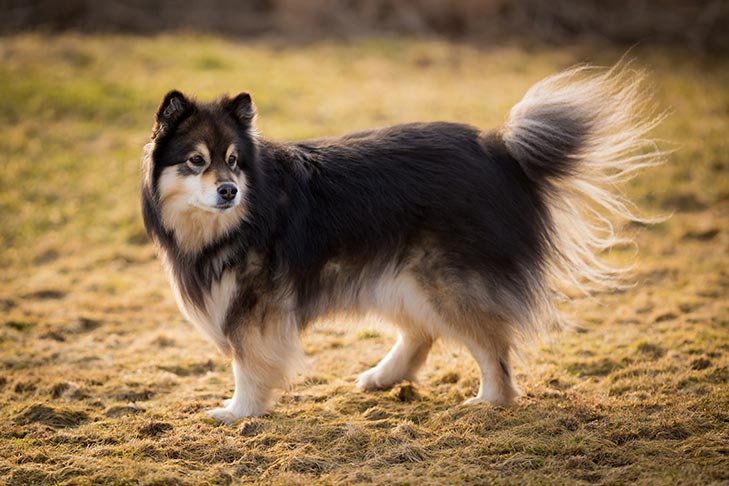
German Shepherd Dog
The German Shepherd Dog might not look quite as much like Canis lupis as some of the Nordic spitz-types on this list, but you can certainly see some wolf-like aspects in this all-purpose worker’s appearance. And it’s no surprise it was a GSD they crossed with a wolf to create the first Czech Vlcak. As one of the top 10 most popular breeds in the United States year after year, with the right training, socialization, and exercise, this steady, smart, and stouthearted dog makes a wonderful family pet and guardian.

Norwegian Elkhound
Broader and boxier than a wolf, the Norwegian Elkhound is another ancient Nordic spitz breed that looks a little wolfish. Sailing and hunting with the Vikings, they went on to herd sheep and guard rural Norwegian farms. These days, their natural stamina and dependability make them ideal eager herding competitors but watch out for their high prey drive and independent streak. Their dense, silver-gray coat adds to their wolf-like appearance, and, like their wild counterparts, they’re wary of strangers but unmistakably loyal and loving to those in their trusted circle.
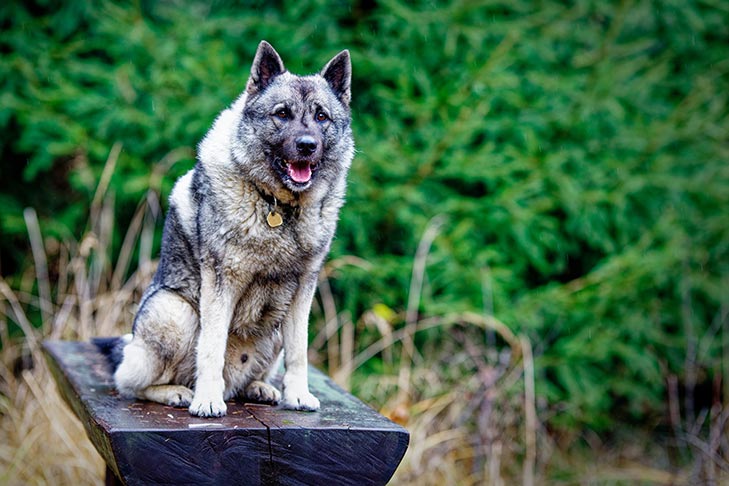
Samoyed
Another sled dog with a thick coat, enduring stamina, smarts, and a strong social side, the Samoyed could be mistaken for a fluffy, white-coated wolf from afar. The Sammies’ famous smile might be a practical breed trait designed to prevent drool from turning to icicles on their face, but it fits in with their happy, friendly disposition and love of being in the center of their pack. This social side is why Sammies suit best being part of a family they can be with most of the day to prevent separation anxiety from rearing its head.

Siberian Husky
If you ask people what dog reminds them most of a wolf, the Siberian Husky is a routine response. The most well-known and beloved of all the spitz breeds, their speed, stamina, and svelte lines made them popular sled racers when they came to North American shores in the early 20th century. These days, they’re also desirable family pets with fun, cheeky, outgoing characters. But, if you can’t put enough effort into exercise and education, a Husky, with its roaming, pack-life wolf traits, won’t be the pet for you. They’re well-suited to active families that can be with them most of the day and who don’t mind copious amounts of fur on their furniture and the occasional whining.

Swedish Vallhund
A low-slung breed that merges the stumpy-like appearance of a cute Pembroke Welsh Corgi with wolf-like features, the Swedish Vallhund is still used as an adaptable, all-purpose farm dog in its home country. Sharing the independent but loyal traits of many Spitz breeds, they have a peppy, cheery disposition. While they still need a decent amount of exercise and enrichment, they aren’t as high-energy as some breeds on this list. But, because of their cattle herding background, get ready to work on harnessing their instinct to chase.
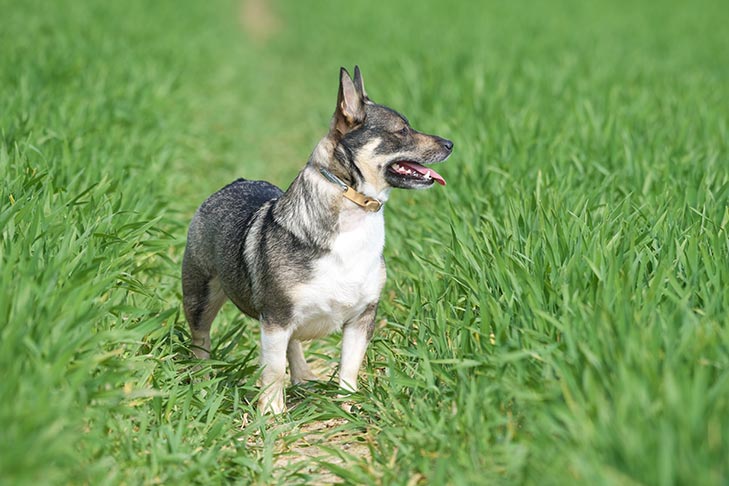
Yakutian Laika
A newer FSS breed with an ancient history, the Yakutian Laika was a multipurpose working dog used to pull sleds, herd reindeer, and hunt for the people in the Yakutia region of Russian Siberia. This rare dog looks a bit like a cross between a Collie, a fluffy spitz breed, and a wolf with its wedge-shaped, pointed head. These days, they’re known as devoted and gentle family members with bags of energy. Although naturally wary and sensitive, they warm up quickly to those they trust. Like wolves, they might love to chase potential prey, but they’re smart and eager to please, so it’s something you can work on preventing.
